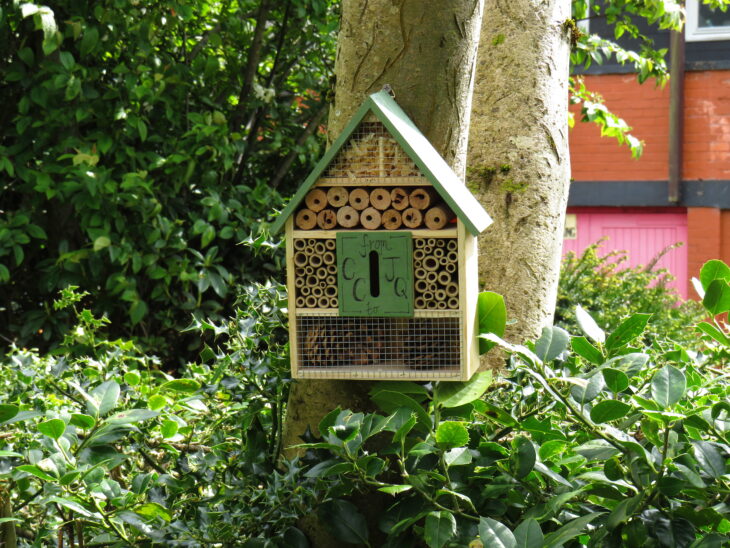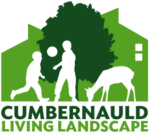Community gardens support wildlife in Cumbernauld
,

One of the bug hotels at Craigieburn Community Garden (c) Kate Fromings
Community Garden Week runs from 3rd – 9th April so, today, we are handing our blog over to Kate Fromings from Craigieburn Community Garden for an update on what’s been happening there…
In Cumbernauld, there is an issue with the lack of native plants within the town’s green spaces. This monoculture causes major issues for soil quality: nutrients are exhausted, the industrial planting scheme becomes diseased over time, eventually dying. Then, essential ‘mini beasts’ that wildlife feed on disappear gradually, leading to a decline in birds and mammals in the heart of urban Cumbernauld.
When I decided to tackle this issue in North Carbrain, I wasn’t prepared for the overwhelming support of my neighbours, who had noticed these declines, too. The main areas of concern from our residents were fewer sightings of bats, the decline of common bird species such as sparrows, less butterfly sightings, and most importantly, the poor state of the flowerbeds which were a target for litter.
We all decided to work together to make some changes within the green space next to our houses with an immediate, measurable impact. We built and accepted donations of ‘bug hotels,’ wooden boxes that replicate the hidey-holes and shelter found in a variety of native trees such as oak and yew. We’ve been amazed at the different species of spiders and flying insects that use them. The kids’ favourite are the pretty green lacewings.
Birds feed on insects and berries, so the garden has created insect-friendly spaces and planted native Scottish shrubs, which provide flowers for pollinators in the Summer and food for birds in the Autumn. We also keep leaf litter and woodpiles available for mammals, such as hedgehogs, to shelter in. The damp spaces under the woodpiles allow slugs, snails and large beetles to breed. We were amazed when a Violet Ground Beetle wandered across the path one day! This is all helped by our commitment to being organic. We don’t use weedkillers, instead taking the time to weed a little each day or hand-water seaweed fertiliser on the flowerbeds, maintaining the good bacteria and mycelium in the soil. This is the foundation for a healthy garden.
Residents and volunteers take part in all aspects of gardening from aerating the soil with forks and adding our own leaf mulch, to organised litter picks. It’s inspiring introducing people to gardening and see them take a real interest in learning about nature. Younger residents can use their screen time to positively, too, to further their fascination with wildlife by using apps.
The Craigieburn Road Garden was only fully established in April 2022, and now a year later, we have seen improvements in all affected areas of wildlife. More bird species are recorded here, including green woodpeckers and siskins; five types of butterflies were spotted last summer; and a couple of hedgehog families are thriving. We would urge anyone who has a garden or yard – no matter how small – to find ways to make it more wildlife friendly. If we all work together, great things can happen!
Follow the progress of Craigieburn @CraigieburnCommunityGarden
Written by Kate Fromings.
